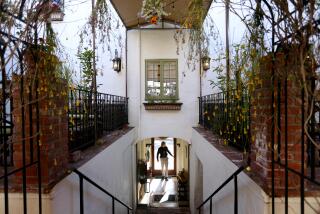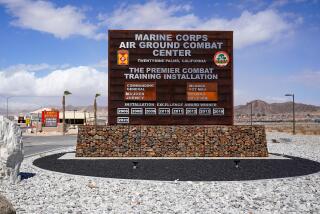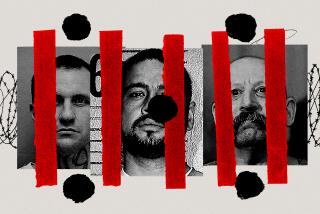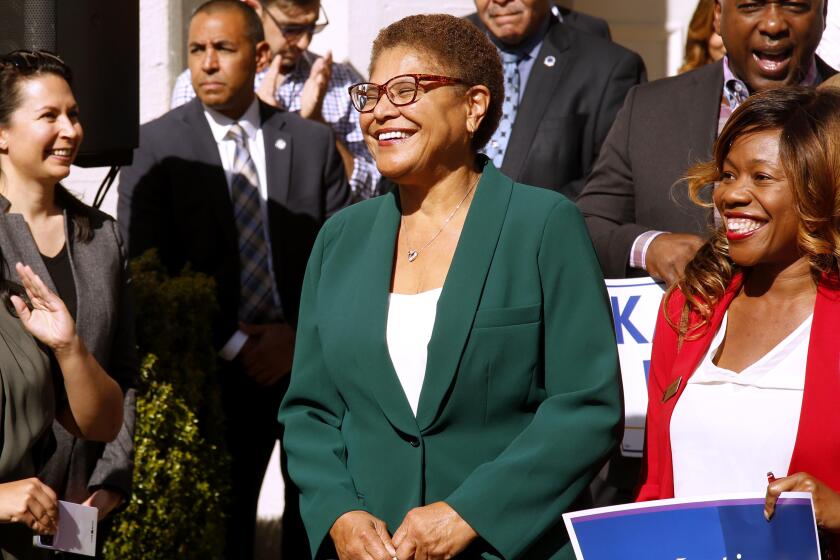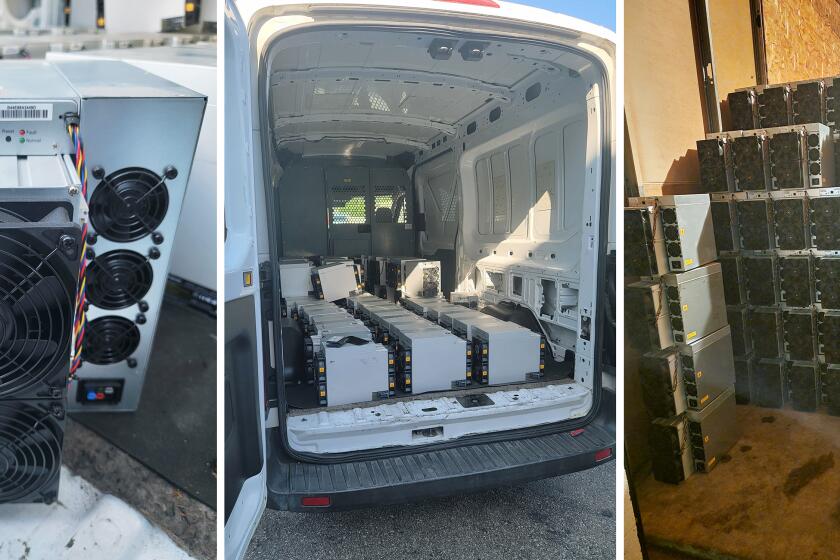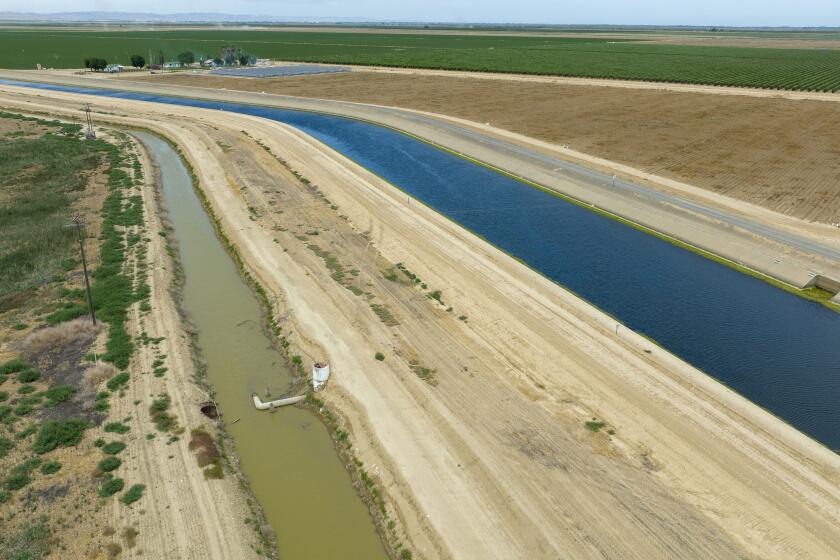Victims Recall El Nino of 1982
The victims never knew what hit them. Never knew its name, that is.
Remembers Michael Malley, who was washed down a Canoga Park storm channel: “El Nino? I just figured that it was winter. It rains in winter.”
Says Irene Willis, who was plucked off Broadway in South-Central Los Angeles by a black funnel cloud: “I’d never heard of El Nino. But I knew what a tornado was--I was raised in Oklahoma.”
Recalls Kurt Holst, who watched the ocean push a piano through the wall of his family’s Malibu home before sending the place crashing onto the beach: “We didn’t think anything scientific. We just thought ‘high tide, big waves, old house.’ ”
Malley, Willis and Holst were victims of the last series of El Nino storms to strike Los Angeles. Except that nobody 15 years ago knew to call it El Nino.
“Unusual weather.” “Freak storm.” “Winter deluge.” That’s the way the punishing storms were described back then.
That lack of awareness of El Nino sharply contrasts with today’s Ninomania, when every autumn breeze, rain shower and traffic accident is being blamed on the weather phenomenon caused by warming Pacific Ocean currents.
Back in 1982 and early 1983, the weird weather was a mystery.
Two scientists at the Scripps Institution of Oceanography in La Jolla even blamed volcanic eruptions in Mexico for making weather patterns go haywire. They announced that studies of U.S. Weather Service records dating back to 1871 showed that weather changes came after every major eruption, such as Krakatoa in 1883.
Officials’ first mention of what they called “the El Nino effect” came after months of hard rain, in March 1983, at a Scripps Institution weather workshop. But even then researchers acknowledged they knew little about its cause.
“At this point there’s a certain kind of abnormal weather associated with these happenings, but the connection is difficult to make,” said a workshop organizer. “We don’t have any clear or simple answer.”
Around Los Angeles, things seemed simple enough to those experiencing frequent canyon flash-flood warnings, blown-down power lines and recurring rainstorms: It was wintertime.
It was during a break between December storms that Malley was washed down Bell Canyon Creek in Canoga Park after he helped rescue an 8-year-old boy who had fallen in. Malley and a friend were swept a mile before they were able to grab onto the Shoup Avenue bridge.
Malley was able to climb out of the water, and firefighters helped rescue his friend. Workers at a nearby hospital gave the pair gowns to wear and dried their clothes.
“We were using a rope to get the kid out and my buddy got dragged in and he pulled me down, too,” explained Malley, now a 38-year-old Department of Water and Power worker who lives in Chatsworth. He blames the steepness of the sides of the channel walls as much as the depth of the water for the pair’s plight.
“I’d moved out here from Chicago in the summer of ’82. It was my first winter out here and I thought nothing about the weather. So it was raining . . . in the winter in Chicago it snows,” he said.
There were plenty of other rescues of people caught in storm runoff--including a 28-year-old woman who was swept seven miles down the normally knee-deep Los Angeles River after a freak rainstorm struck in the middle of August.
Winds played havoc in Los Angeles for months.
More than 1.6 million Southland homes lost power because of a December storm packing winds that at times reached hurricane velocities. A September storm caused a small funnel cloud to descend on Walnut Park, about seven miles south of downtown Los Angeles, collapsing one roof, blowing out windows and uprooting a tree.
But that was nothing compared with the twister that hit Irene Willis in March.
The tornado stripped part of the roof off the Los Angeles Convention Center before roaring south along Broadway, ripping apart houses, smashing in brick storefronts and overturning cars. More than 150 buildings were destroyed or damaged. Thirty-two people were hurt.
“I saw it coming, a big grayish, blackish swirling ball. It went right over the top of the post office there on Broadway and hit me like a ton of bricks,” said Willis, who has operated the Lighthouse Preschool in South-Central Los Angeles for more than 25 years.
It lifted the huge Lincoln Versailles that Willis was driving and dropped it on its wheels.
“I had no control of my car. I didn’t know if my car was on the ground or in the air. My windshield got knocked out--a big board went right through it and went past my shoulder and landed in the back seat. It sounded like a bunch of freight trains going by.”
Live power lines fell across her car as the twister moved down the street, but Willis managed to avoid being electrocuted as she crawled out. “All I could do was say a prayer,” she said.
Scientists were just starting to tie the stormy weather to warming Pacific Ocean currents when the tornado struck.
“I didn’t know about any El Nino. But I knew what hit me,” Willis recalled this week. “Tornadoes are no stranger to me. In Oklahoma when I was 16 or 17 I saw a tornado lift my house right off its foundation.”
El Nino pounded Malibu residents for months.
In March, waves 18 feet high undermined five homes along Malibu Road, including one owned by tennis star Billie Jean King, and tore away a 400-foot section of the Santa Monica Pier. In Santa Barbara, the city’s harbor was evacuated after huge waves flooded boats and damaged 30 homes.
The stormy seas kept the British Royal Yacht Britannia docked at Long Beach Harbor, wiping out plans by visiting Queen Elizabeth II to cruise to Santa Barbara for a March meeting with then-President Ronald Reagan at his ranch.
*
The queen traveled instead in a presidential jet to the soggy ranch. The visit was likened to “a wet afternoon on Dartmoor” by a British reporter. Her press secretary later declared that the queen had found the visit “terribly exciting.”
It wasn’t nearly as exciting as the December visit that Kurt Holst made to his mother-in-law’s Pacific Coast Highway home.
“The house had already started pulling away from the highway,” Holst, now a 37-year-old Agoura Hills telecommunications marketer, recalled the other day. “I went to call my mother-in-law to tell her she’d better come home. When I came back the first floor was covered with water.”
As he watched, a big wave bore down on the house, now tilting precariously on its wood pilings.
“I knew it was going to do something. Sure enough, it pushed the piano and the fireplace out the side of the house and onto the beach,” Holst said.
“I definitely will never forget it, seeing the piano busting out the side wall. Seeing couches, everything, floating by.”
Holst, too, hadn’t heard about El Nino back then. He remembers dismissing the home’s destruction as the result of big waves and an old house. Even today Holst said he’s skeptical of El Nino predictions, such as the one issued two months ago by scientists attending a three-day U.N.-sponsored conference in Geneva, Switzerland.
They warned that the upcoming El Nino could be the largest climatic event of the century, one that sets off an unprecedented number of global disasters. The climate experts said Pacific Ocean temperatures measured in July were the highest ever seen in 150 years of record-keeping.
Said Holst: “I’m one of those guys that, when it comes to weather, I’ll believe it when I see it.”
Malley agrees. “I think it’s hyped up a little too much,” he said of El Nino.
Tornado survivor Willis hasn’t paid much mind to El Nino warnings this year, either. She prefers to watch the skies with her own eyes.
“I look at the clouds,” she said Tuesday as she scanned Los Angeles’ stormy horizon. “If they look black, that’s when I get nervous.”
More to Read
Start your day right
Sign up for Essential California for news, features and recommendations from the L.A. Times and beyond in your inbox six days a week.
You may occasionally receive promotional content from the Los Angeles Times.
